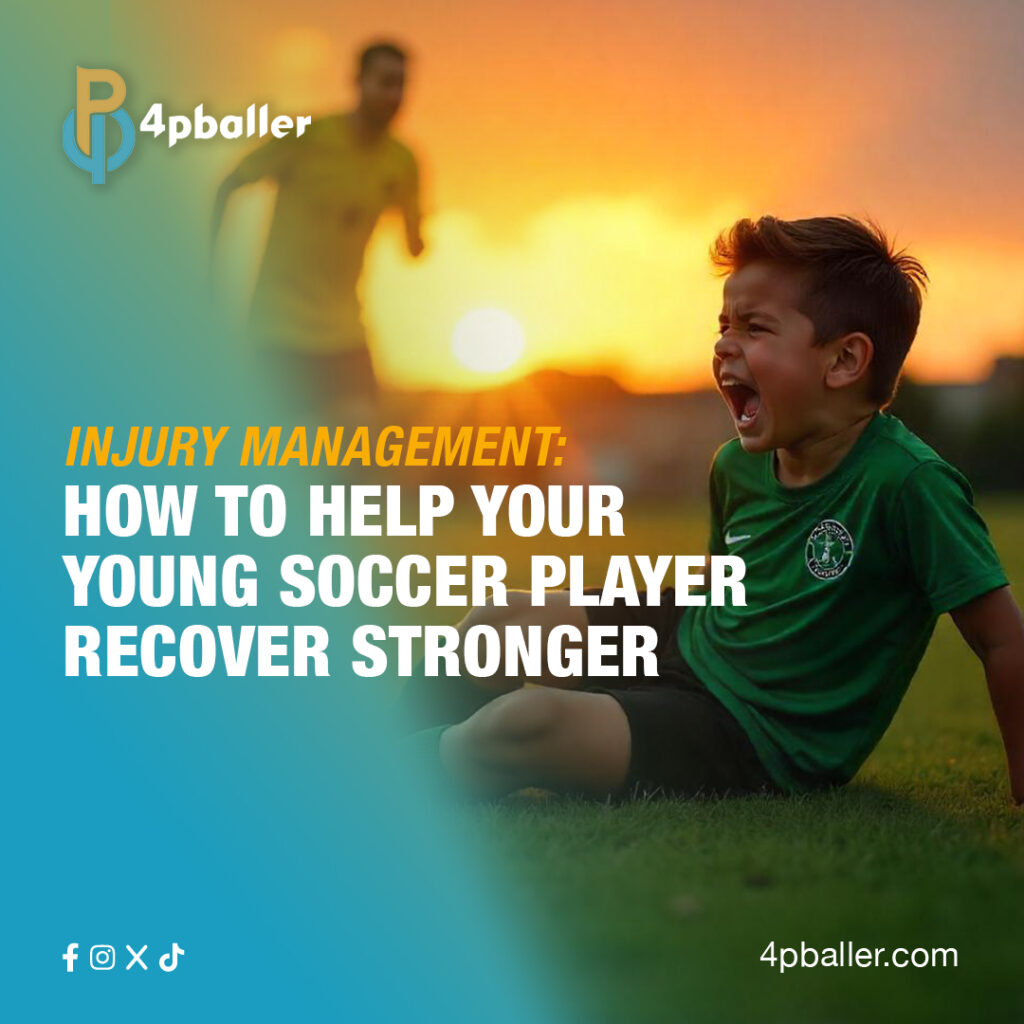Dealing with injuries can be tough, but with the right care, your young soccer player can come back stronger than ever. Learn how to manage their recovery effectively.
Injuries are an inevitable part of any young soccer player’s journey. Whether it’s a minor sprain or a more serious issue, managing your child’s recovery effectively is crucial for their long-term health and performance. As a parent, you play a vital role in ensuring your young athlete receives the proper care and support they need to recover fully and return to the field stronger than before.
Understanding Common Soccer Injuries
Recognize the most common injuries that young soccer players face. Knee and ankle injuries are particularly prevalent, but understanding the nature of these injuries helps you take proactive steps to prevent and manage them.
- Knee Injuries: These are among the most common soccer injuries, often resulting from sudden stops, turns, or collisions. Proper warm-ups and strength training can help prevent knee injuries.
- Ankle Injuries: Ankle sprains and strains are frequent due to the quick changes in direction and uneven playing surfaces. Ensuring your child wears supportive footwear and practices good technique can reduce the risk.
- Muscle Strains: Overuse and sudden movements can lead to muscle strains, particularly in the hamstrings and groin. Regular stretching and conditioning exercises can help prevent these injuries.
Seeking Professional Medical Care
Ensure your child receives immediate and appropriate medical attention. Consult with a healthcare professional experienced in sports medicine to get an accurate diagnosis and treatment plan.
- Initial Assessment: Take your child to a healthcare provider as soon as possible after an injury. Early intervention can prevent further damage and speed up recovery.
- Follow-Up Care: Regularly follow up with the healthcare provider to monitor progress and adjust the treatment plan as needed.
Implementing a Rehabilitation Plan
Work closely with healthcare providers to develop and implement a comprehensive rehabilitation plan. This plan should include exercises and therapies tailored to your child’s specific injury and needs.
- Physical Therapy: Engage your child in physical therapy sessions to regain strength, flexibility, and range of motion. Consistent therapy helps restore functionality and prevents future injuries.
- Home Exercises: Encourage your child to perform prescribed exercises at home to supplement their therapy sessions. Ensure they follow the recommended routine diligently.
Providing Emotional Support
Offer emotional support and encouragement throughout the recovery process. Injuries can be emotionally challenging, and your child needs your support to stay motivated and positive.
- Positive Reinforcement: Praise your child’s efforts and progress, no matter how small. Positive reinforcement boosts their morale and keeps them engaged in their recovery.
- Open Communication: Create an open and supportive environment where your child feels comfortable discussing their feelings and concerns.
Ensuring Proper Nutrition and Rest
Focus on providing a balanced diet and adequate rest to support your child’s recovery. Proper nutrition and rest are essential for healing and maintaining overall health.
- Balanced Diet: Ensure your child consumes a diet rich in nutrients that promote healing, such as proteins, vitamins, and minerals.
- Adequate Rest: Encourage your child to get plenty of rest and sleep. Rest is crucial for the body to repair and recover from injuries.
Gradual Return to Play
Plan a gradual return to soccer activities to prevent re-injury and ensure a smooth transition back to full participation. Work closely with coaches and healthcare providers to determine the appropriate timeline and steps for returning to play.
- Progressive Training: Gradually increase the intensity and duration of training sessions as your child regains strength and confidence.
- Monitor Progress: Continuously monitor your child’s progress and adjust the training plan as needed. Ensure they feel comfortable and confident at each stage of their return to play.
Preventing Future Injuries
Take proactive measures to prevent future injuries and promote long-term health. Incorporate injury prevention strategies into your child’s routine to minimize the risk of recurring issues.
- Strength and Conditioning: Include strength and conditioning exercises in your child’s training routine to build resilience and reduce the risk of injuries.
- Proper Warm-Up and Cool-Down: Ensure your child performs proper warm-up and cool-down routines before and after training sessions and games to prepare their muscles and prevent injuries.
Conclusion
Managing your young soccer player’s injury recovery effectively requires a combination of professional medical care, a comprehensive rehabilitation plan, emotional support, proper nutrition, and rest. through taking proactive steps and providing unwavering support, you can help your child recover stronger and return to the field with confidence.
Take the first step in managing your young soccer player’s injury recovery effectively. Consult with a healthcare professional, develop a rehabilitation plan, and provide the support your child needs to recover stronger. Share your experiences and tips with us, and let’s build a community of supportive soccer parents.

